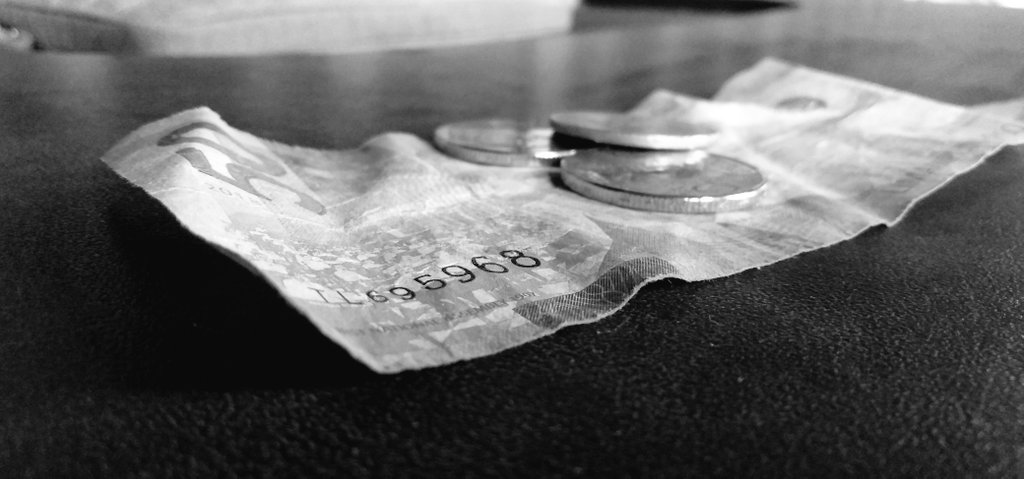The cheapest phone cost 3,500 pesos.
You didn’t know anything about cellphone brands that didn’t have keypads. Technology was a mess of confusion and unnecessary expenses. It seemed like they belong to a world beyond your own, limited by numbers like your salary.
You brave the cellphone store for the first time—the draft of the air conditioner feels foreign on your skin and the blue light from the display case strains your eyes. When the saleslady notices you staring at the display cases, she directs you to the set of phones you’ve seen your employer use—the ones without the keypads.
The saleslady was still talking to you and you tried to follow her words. She smiles and points to a small phone on the display. She takes it from the display case and holds it up.
“Does it have a camera?” You inspect the phone, wondering how a camera could fit inside a small gadget.
You still weren’t sure how you could call anyone with it (there wasn’t even a dial for numbers!) You were too embarrassed to ask.
The lady nods, “Yes ma’am, it can even connect to the internet and supports dual sim.”
“That means you can... use Facebook?”
“Yes ma’am.”
You fish your wallet out of your pocket. The saleslady’s eyes glance over to your old worn out wallet and her smile falls imperceptibly.
“Ah, ma’am, we do have keypad phones as well over here—“
“No. I want the one with the camera and internet.”
The saleslady shifts, glancing past your shoulder, “Okay po, this particular model costs 3,500 pesos.”
Your wallet felt lighter than it should be. “Do you have anything cheaper? The cheapest touchscreen one.”
You had 1,300 pesos. 500 for the electric bill and 200 for a kilo of rice to last you at least a week.
The extra bonus from your salary was more than your weeks’ worth of income from working in a sari-sari store and washing other people’s laundry.
When you get home, you take one empty water plastic bottle and draw a small horizontal cut on its body. You write “3,000” below the cut and insert a 1000-peso bill into the cut.
Week 1 - 1,000 pesos
Customers coming by your store severely decreased since the quarantine protocols.
In your barangay, there was at least one sari-sari store in every street corner. However, because of the lockdown, some of your neighbors were forced to close down. Some persisted and even started selling overpriced face masks and alcohol bottles. Your family store happened to be one of those stores—except for the overpricing part since they always seemed to run out of stock.
Most of the neighborhood kids weren’t allowed to go outside to buy snacks so you were forced to cut down the biscuits and candies which made up at least a good half of your income. Since the schools near your shop closed off, there was no point in selling school supplies either. In the end, you were down to selling noodles and canned goods. The 1000-peso bill you dropped in your alkansya felt heavy, but you knew it had to be done.
The shop barely had customers, but Nanay Teresita always buys the same things at least twice a week; medium-sized Pampers, Bear Brand Swak, and a pack of Marlboro Lights. Her routine was an easy 70 pesos for you. Within a week, you managed to make 140 pesos.
Week 2 - 1,140 pesos
There were 2 high school students who bought a box of face masks that you saved a month before the lockdown, the box cost 290 pesos and you sold it for 550.
A few days later, your eldest daughter asks for 300 pesos.
Week 3 - 1,390 pesos
You ran out of instant noodles, and Nanay Teresita wasn’t at the store this week. You count the money in your wallet and see that you have enough to buy another kilo of rice. During dinner, you say that you’ve already eaten, but your husband looks at you knowingly.
Two of your daughters smile, excited for their upcoming classes. They exchange stories and fantasies of what it would be like to have their classes at home.
All three of your daughter’s classes start in a few weeks—you remember that the cheapest phone costs 3,000.
Your husband pulls you inside your living room when your three kids sleep.
“Is this really worth it? Didn’t they say that there were alternative printed modules or something?”
You shake your head, “I think it’d be good if Maya had her own phone.” You remember going to a PTA meeting seeing the other parents holding high-end phones, with your daughter’s classmates holding one of their own. “Plus it could be an early birthday present.”
Your husband stays silent and places two 1000-peso bills on your open palm.
“Do what you can.”
Week 4 - 3,390 pesos
A small convenience store opens in front of your store. They sell most of the masks and canned goods at a cheaper price for some reason. When Nanay Teresita passes by your store, you try to call her out. She apologizes, saying that the other convenience store has more of the items she needed. She buys a small pack of cigarettes from you as an apology.
Week 5 - 3,460 pesos
WIth your heavy wallet and coins jingling in your pocket, you excitedly rush out of your house early in the morning. You imagine the expression on your daughter’s face the moment you surprise her with a brand new phone. She would most probably be happy and grateful, knowing that her academic life would be easier with this.
The saleslady gives you a look. “Welcome ma’am.”
You point at the smartphone model that the lady showed you before. “I will buy that one.” You say confidently. You pull out your wallet, ready to pay.
The saleslady smiles at you, “Okay ma’am. Would you like to look at its specs?”
“No need. I’ve already been here last week. It’s 3,500 pesos right?”
The saleslady hesitates, “Oh...” She looks at you as if she’s seeing you for the first time, “I— my mistake po, these are Samsung phones. This one is the cheapest. It costs 7,500.”
You have 3,450 pesos and—a few thousand pesos short.
Edited by Lois Mauri Anne L. Liwanag


